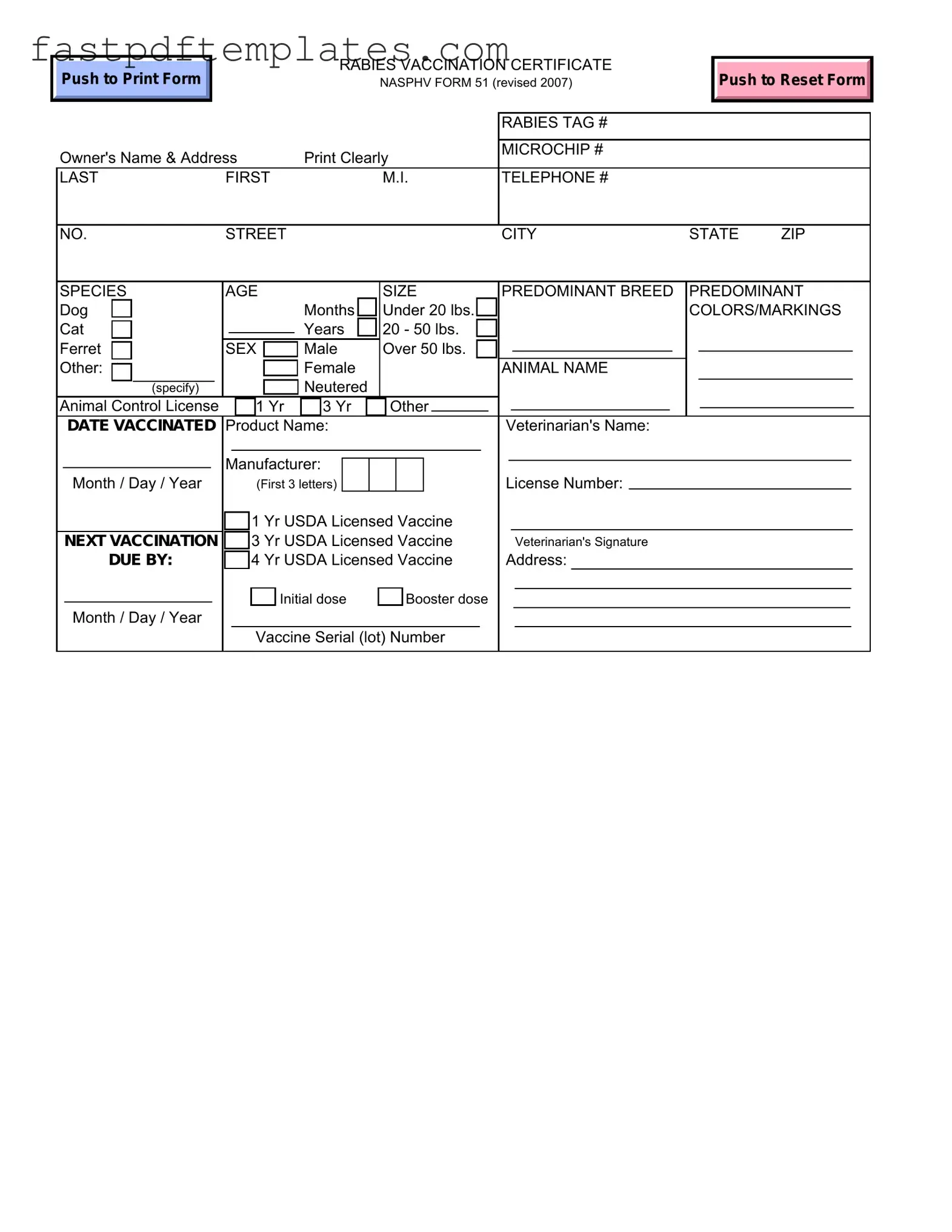The Vaccination Record is a document that outlines the vaccinations a pet has received. Similar to the Rabies Certificate, it includes information such as the pet's name, species, and owner details. This record serves as proof that the pet is up-to-date on its vaccinations. Both documents are essential for ensuring the health and safety of pets and may be required for boarding or traveling. The Vaccination Record is often kept by veterinarians and can be requested by pet owners when needed.
The Health Certificate is another important document that verifies a pet's overall health status. Like the Rabies Certificate, it must be signed by a licensed veterinarian. The Health Certificate is typically required for travel or when adopting a pet. It contains details about the pet's vaccinations, medical history, and any health concerns. Both documents are crucial for ensuring that pets are healthy and safe, especially when interacting with other animals or entering new environments.
The Microchip Registration form is similar in that it provides essential information about a pet's identification. This document includes details such as the microchip number, pet's name, and owner's contact information. Just as the Rabies Certificate helps prove a pet's vaccination status, the Microchip Registration form helps reunite lost pets with their owners. Both documents emphasize the importance of keeping accurate records for the safety and well-being of pets.
The Animal Control License is a permit that allows pet owners to keep animals in their jurisdiction. This document often requires proof of vaccination, similar to the Rabies Certificate. The Animal Control License includes the owner's name, address, and details about the pet. Both documents are essential for compliance with local laws and regulations, ensuring that pets are properly cared for and vaccinated against diseases.
The Spay/Neuter Certificate is a document that confirms a pet has been spayed or neutered. This certificate often accompanies the Rabies Certificate, as many veterinary clinics require proof of sterilization before administering vaccinations. It includes the pet's information and the veterinarian's signature. Both documents play a role in responsible pet ownership, promoting the health and welfare of pets while helping to control the pet population.

